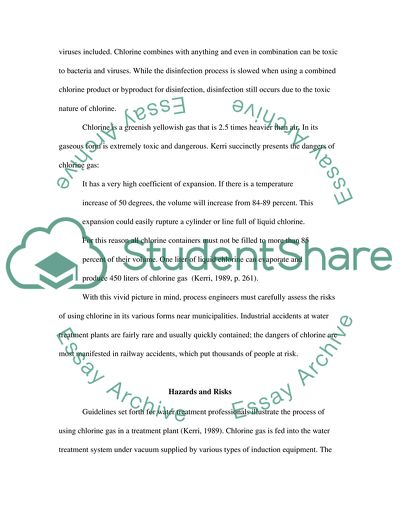Cite this document
(Water Treatment Plants and Disinfecting Water: Uses of Chlorine Research Paper, n.d.)
Water Treatment Plants and Disinfecting Water: Uses of Chlorine Research Paper. Retrieved from https://studentshare.org/chemistry/1727150-chlorine-in-the-water-treatment-industry
Water Treatment Plants and Disinfecting Water: Uses of Chlorine Research Paper. Retrieved from https://studentshare.org/chemistry/1727150-chlorine-in-the-water-treatment-industry
(Water Treatment Plants and Disinfecting Water: Uses of Chlorine Research Paper)
Water Treatment Plants and Disinfecting Water: Uses of Chlorine Research Paper. https://studentshare.org/chemistry/1727150-chlorine-in-the-water-treatment-industry.
Water Treatment Plants and Disinfecting Water: Uses of Chlorine Research Paper. https://studentshare.org/chemistry/1727150-chlorine-in-the-water-treatment-industry.
“Water Treatment Plants and Disinfecting Water: Uses of Chlorine Research Paper”, n.d. https://studentshare.org/chemistry/1727150-chlorine-in-the-water-treatment-industry.


